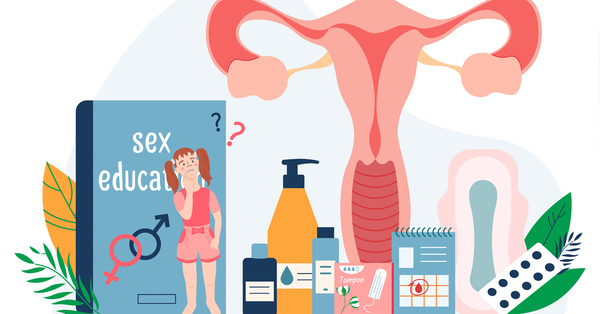Follow us on Instagram, TikTok, and Telegram for the latest stories and breaking news.
Men and women have physically different bodies, and that includes most obviously, our reproductive organs
While people won’t usually do a double take when talking about men’s external genitalia or penises, women’s genitals are often shrouded in mystery and are not talked about due to our society’s more reserved nature for all topics surrounding women.
This article will look into the names and structures of female external genitals and internal reproductive organs.
The anatomy (body parts) specific to women generally relates to sexual function, reproduction, and hormone control.
Image via Freepik
Here are the female body parts we ought to know and their functions:
The female external genitals (vulva)
The vulva is made up of structures outside the vaginal opening, including:
– Mons pubis. The mons pubis is just a fleshy area on top of the pelvic bone where pubic hair grows.
– Labia majora and labia minora. The labia (Latin for ‘lips’) are the fleshy inner and outer folds on either side of the vaginal opening. They vary in size among all women, and for some, the inner folds may also extend beyond the outer folds.
– Clitoris. The head of the clitoris (glans clitoris) sits where the labia minora meet at the top. It is a highly-innervated body that is sensitive to sexual stimulation. Only the tip of the clitoris is visible, but it has two shafts made of erectile tissue that are under the skin (and engorges when sexually aroused). The clitoris is biologically similar to the erectile tissue in a penis.
– Urethral opening. The urethra is a tube that carries urine from the bladder. So, in simple words, this hole is where women pee from. This tiny opening is located below the head of the clitoris and above the vaginal opening.
– Vaginal opening. This is the opening to the vaginal canal and it is located below the urethral opening and is usually covered by the labia.
Image via Echo Clinics
The internal female anatomy (uterus and vagina)
The internal female anatomy begins at the vagina and extends up to the womb inside a woman’s body. They include:
– Vagina. As mentioned above, the vagina is a passageway for women to experience sexual pleasure, channel period blood out of the body, and birth a baby. It is about 2.5 to 3 inches long and expands during arousal and childbirth. It also has glands that secrete lubrication during sex.
– Cervix. The cervix is a part of the uterus (or, the womb). It is the entryway that separates the vagina from the rest of the uterus. During childbirth, the cervix dilates to allow the baby to move out of the womb.
– Uterus. The uterus is the muscular organ inside a woman’s pelvis that holds a baby during pregnancy. Every month, the uterus will thicken its lining in preparation for a pregnancy. However, if a pregnancy does not occur, the uterine lining will shed, ending up as menstrual blood.
– Ovaries. Every woman has two ovaries, each attached to the arms (Fallopian tubes) of the uterus on either side. These almond-sized organs produce eggs every month and release the hormones oestrogen and progesterone, which regulates a woman’s menstrual cycle.
Image via Everyday Health
The female breasts
Women’s breasts are for breastfeeding and for bringing sexual pleasure. They are made up of multiple structures, including:
– Nipple. The nipple is where milk drains to feed a baby. They also have many nerve endings, which make them an area for sexual stimulation.
– Areola. The areola is the circular pigmented area that surrounds the nipple and varies in size in all women. It has glands that secrete lubrication to keep the nipple from drying out, especially when breastfeeding.
– Breast tissue. The breast is composed of connective and fatty tissue that varies in size from person to person.
– Lobules and ducts. These structures produce milk and carry the milk from internally to the nipples.
Image via MentorDirect
The female body may seem complicated but taking the time to know each part and function will help us in understanding women’s bodies better.
Even a little knowledge goes a long way when it comes to sex education.
Look out for more #sexualhealth stories and tips this month!
From contraceptives to vibrators, and intimacy to abstinence, no topic is off limits. Join us in normalising conversations surrounding sexual health.
Image via SAYS



